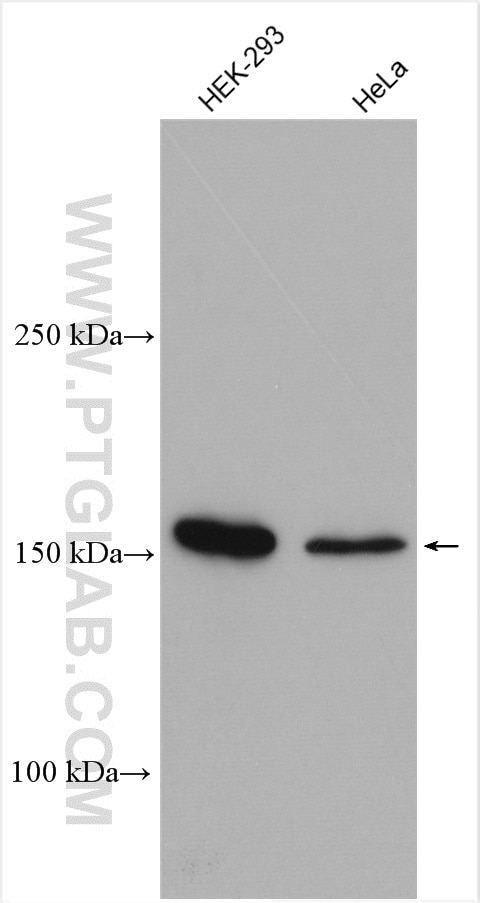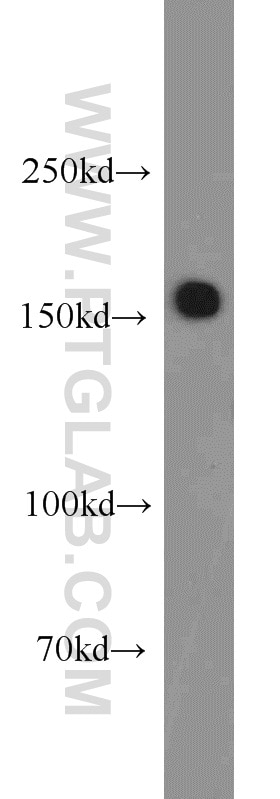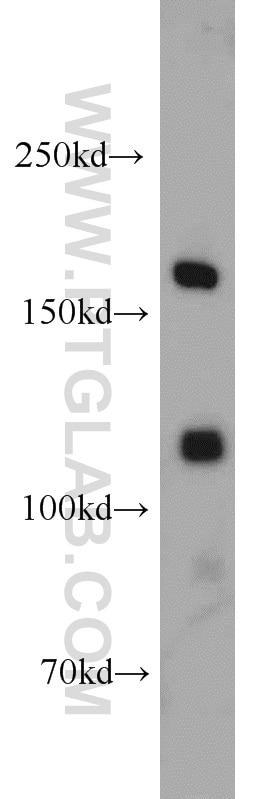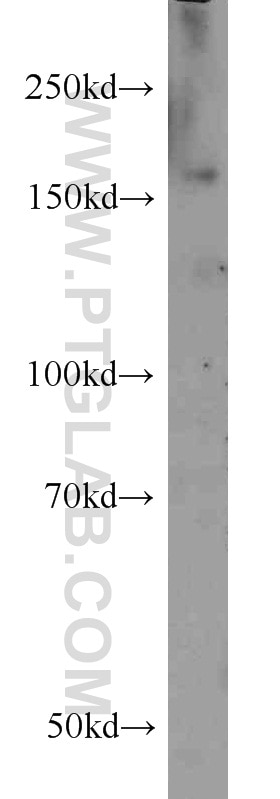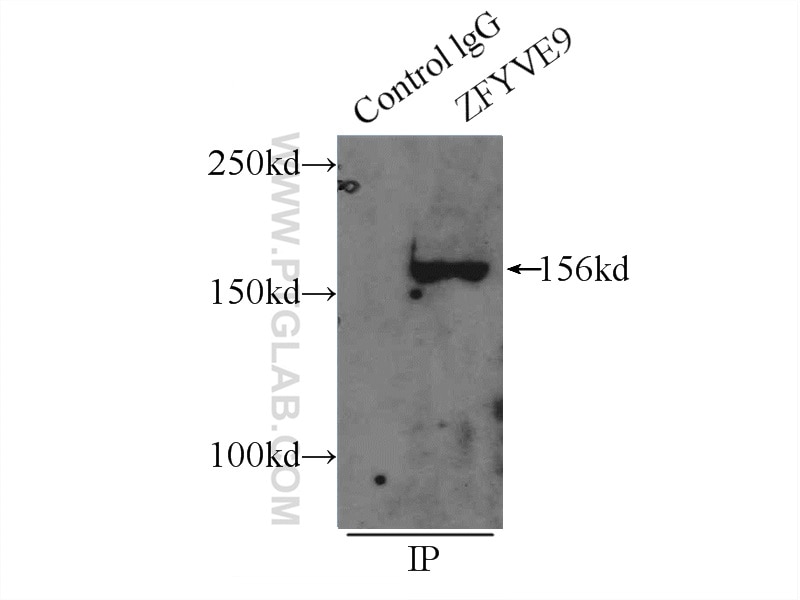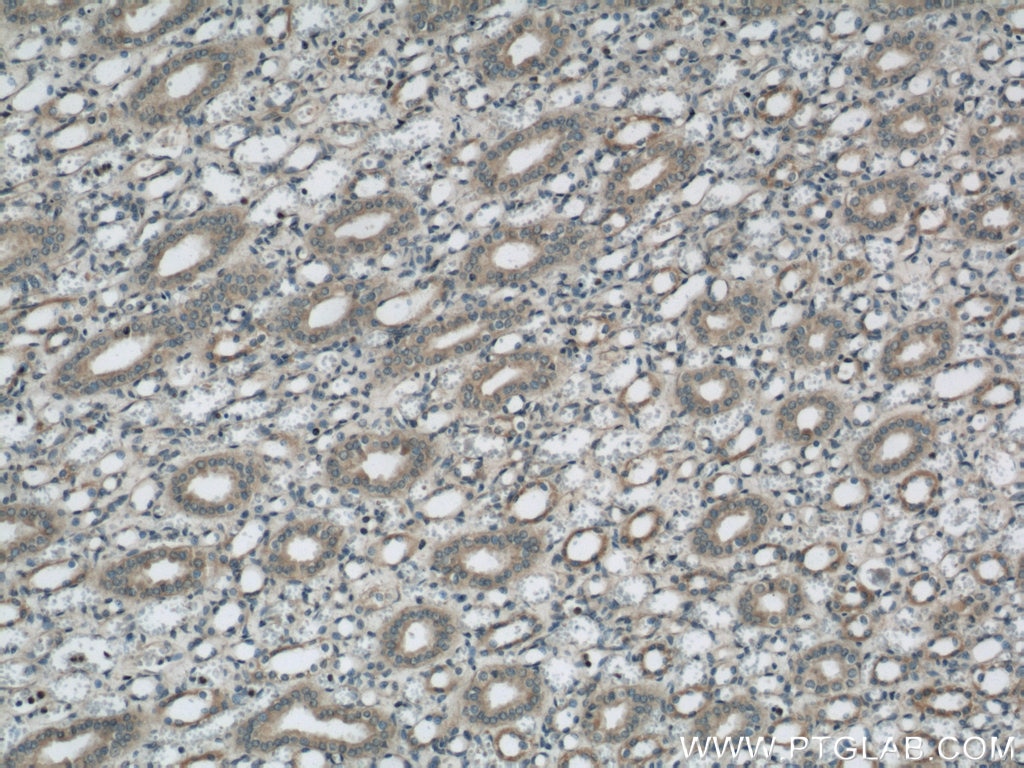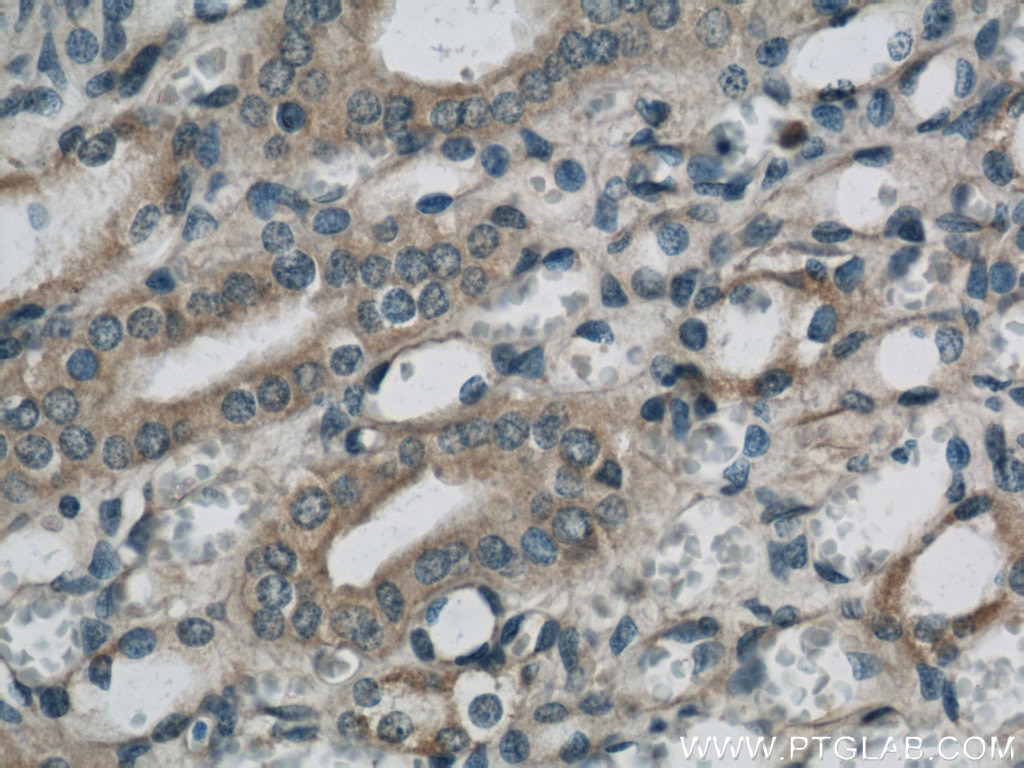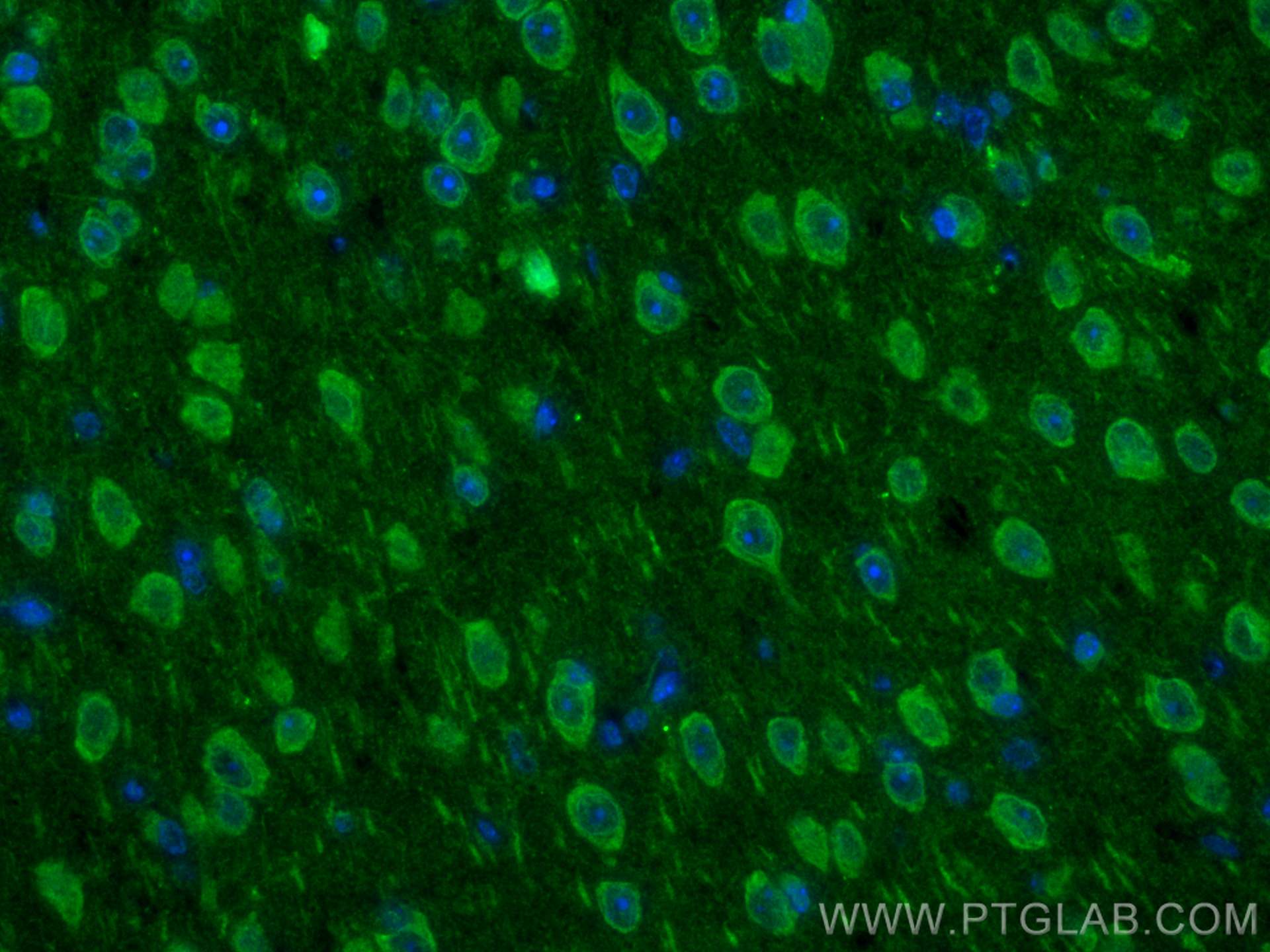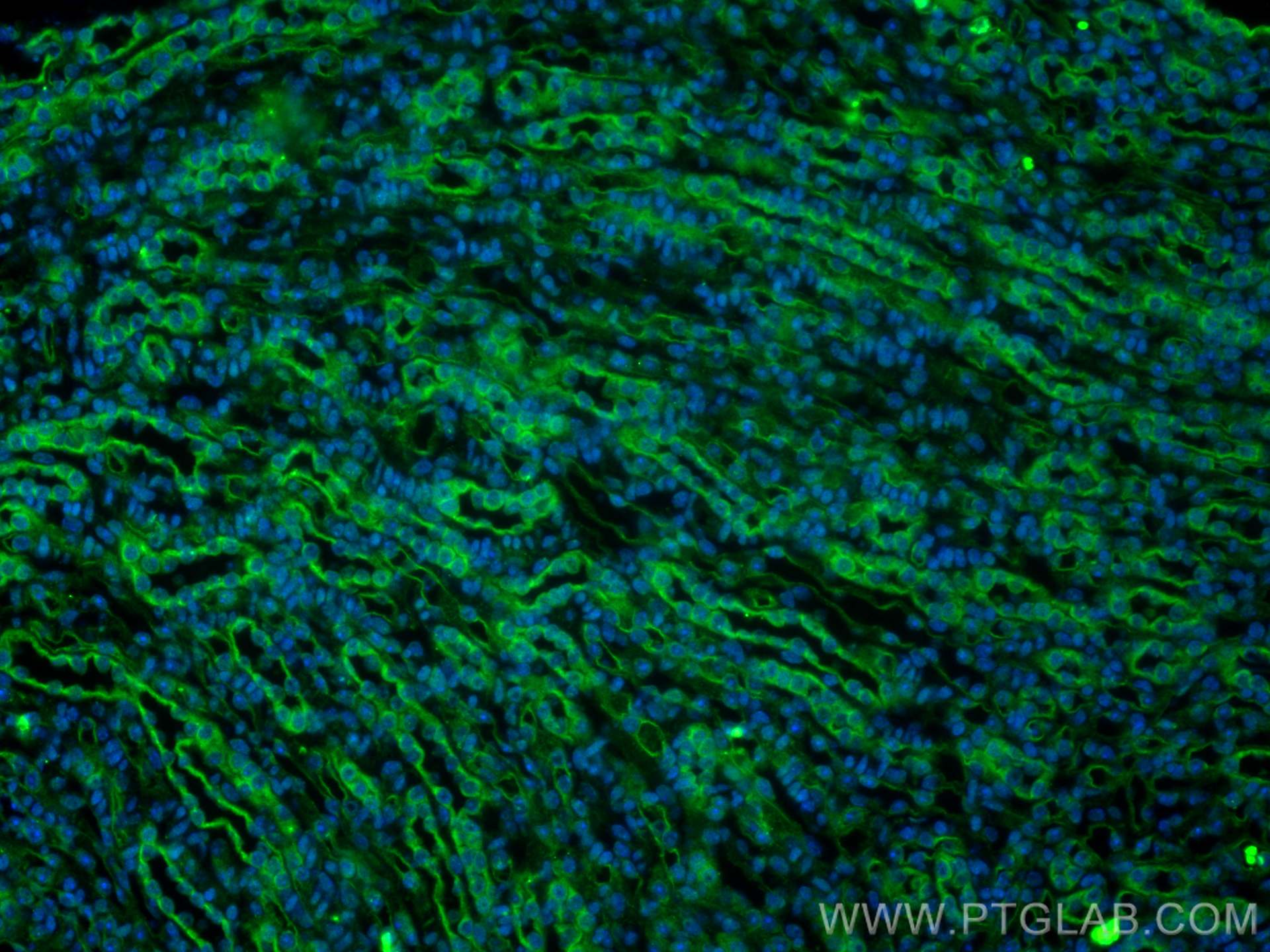Tested Applications
| Positive WB detected in | HEK-293 cells, mouse brain tissue, MCF-7 cells, human brain tissue, HeLa cells |
| Positive IP detected in | mouse brain tissue |
| Positive IHC detected in | human kidney tissue Note: suggested antigen retrieval with TE buffer pH 9.0; (*) Alternatively, antigen retrieval may be performed with citrate buffer pH 6.0 |
| Positive IF-P detected in | mouse brain tissue, mouse kidney tissue |
Recommended dilution
| Application | Dilution |
|---|---|
| Western Blot (WB) | WB : 1:500-1:2000 |
| Immunoprecipitation (IP) | IP : 0.5-4.0 ug for 1.0-3.0 mg of total protein lysate |
| Immunohistochemistry (IHC) | IHC : 1:20-1:200 |
| Immunofluorescence (IF)-P | IF-P : 1:50-1:500 |
| It is recommended that this reagent should be titrated in each testing system to obtain optimal results. | |
| Sample-dependent, Check data in validation data gallery. | |
Published Applications
| KD/KO | See 2 publications below |
| WB | See 4 publications below |
| IF | See 2 publications below |
Product Information
22033-1-AP targets SARA in WB, IHC, IF-P, IP, ELISA applications and shows reactivity with human, mouse, rat samples.
| Tested Reactivity | human, mouse, rat |
| Cited Reactivity | human, mouse |
| Host / Isotype | Rabbit / IgG |
| Class | Polyclonal |
| Type | Antibody |
| Immunogen |
CatNo: Ag16929 Product name: Recombinant human ZFYVE9 protein Source: e coli.-derived, PET28a Tag: 6*His Domain: 1075-1425 aa of BC032680 Sequence: MLRLGAEYRLYPCPLFSVRFRKPLFGETGHTIMNLLADFRNYQYTLPVVQGLVVDMEVRKTSIKIPSNRYNEMMKAMNKSNEHVLAGGACFNEKADSHLVCVQNDDGNYQTQAISIHNQPRKVTGASFFVFSGALKSSSGYLAKSSIVEDGVMVQITAENMDSLRQALREMKDFTITCGKADAEEPQEHIHIQWVDDDKNVSKGVVSPIDGKSMETITNVKIFHGSEYKANGKVIRWTEVFFLENDDQHNCLSDPADHSRLTEHVAKAFCLALCPHLKLLKEDGMTKLGLRVTLDSDQVGYQAGSNGQPLPSQYMNDLDSALVPVIHGGACQLSEGPVVMELIFYILENIV Predict reactive species |
| Full Name | zinc finger, FYVE domain containing 9 |
| Calculated Molecular Weight | 1425 aa, 156 kDa |
| Observed Molecular Weight | 156 kDa |
| GenBank Accession Number | BC032680 |
| Gene Symbol | SARA |
| Gene ID (NCBI) | 9372 |
| RRID | AB_11182938 |
| Conjugate | Unconjugated |
| Form | Liquid |
| Purification Method | Antigen affinity purification |
| UNIPROT ID | O95405 |
| Storage Buffer | PBS with 0.02% sodium azide and 50% glycerol, pH 7.3. |
| Storage Conditions | Store at -20°C. Stable for one year after shipment. Aliquoting is unnecessary for -20oC storage. 20ul sizes contain 0.1% BSA. |
Background Information
ZFYVE9, also known as SARA (Smad anchor for receptor activation), is a double zinc finger (FYVE domain) protein that interacts directly with SMAD2 and SMAD3, and is involved in Alzheimer's disease. SARA functions to recruit SMAD2/SMAD3 to intracellular membranes and to the TGF-beta receptor. SARA plays a significant role in TGF-mediated signaling by regulating the subcellular location of SMAD2 and SMAD3 and modulating the transcriptional activity of the SMAD3/SMAD4 complex. SARA is possibly associated with TGF-beta receptor internalization.
Protocols
| Product Specific Protocols | |
|---|---|
| IF protocol for SARA antibody 22033-1-AP | Download protocol |
| IHC protocol for SARA antibody 22033-1-AP | Download protocol |
| IP protocol for SARA antibody 22033-1-AP | Download protocol |
| WB protocol for SARA antibody 22033-1-AP | Download protocol |
| Standard Protocols | |
|---|---|
| Click here to view our Standard Protocols |
Publications
| Species | Application | Title |
|---|---|---|
Structure Structural Basis for Specific Interaction of TGFβ Signaling Regulators SARA/Endofin with HD-PTP.
| ||
J Bone Miner Res Dysfunction of Caveolae-mediated Endocytic TβRI Degradation Results in Hypersensitivity of TGF-β/Smad Signaling in Osteogenesis Imperfecta | ||
Sci Adv Neuropilin 1 is an entry receptor for KSHV infection of mesenchymal stem cell through TGFBR1/2-mediated macropinocytosis
| ||
Autophagy Autophagic degradation of SQSTM1 enables fibroblast activation to accelerate wound healing |

